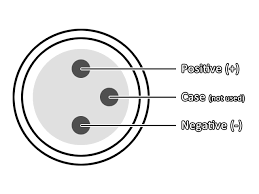They're somewhat tolerant to reverse polarity. They are diodes after all. Matching best-guesses from google is risky for unknown diodes.
Here's my method that has near-zero chance of damaging things, provided you have a bench power supply and know how to use it.
I bring up the voltage slowly with a current-limit near zero and watch the output:
1) If there is noticeable current draw (say, above 10mA) at or below 0.7V, that pinout/polarity is wrong. Try another.
2) If there is no light at all coming from the device at 1.5V, that pinout/polarity is wrong. Try another.
3) If there is a very dim light emitted around 1.5V, that pinout is most likely correct. Continue increasing current.
4) If the light remains very dim at 50mA or so, the diode is either dead, or you have found the IR laser diode in the case. If you were looking for red and not IR, try another pinout.





